INTRODUCTION
Bioceramic materials are biocompatible metal oxides or ceramic materials such as alumina, zirconia, bioactive glass, glass ceramics, hydroxyapatite, calcium silicate, and resorbable calcium phosphate [
1]. They were used initially in endodontology as retrograde filling materials for apical surgery [
2]. Their advanced sealing ability and biocompatibility led to the expansion of their clinical implications for perforation repair, vital pulp therapy, apexification, revascularization, and root canal filling [
3]. Although the term “bioceramic” refers to hydraulic cements that hydrate in the presence of water and interact with tissue fluids, it is an unclearly defined concept that fails to describe the composition and clinical action of these materials [
24]. Many hydraulic cements used in clinical practice consist of tricalcium silicate mixtures [
4]. Thus, the descriptor “hydraulic calcium silicate-based” (HCSB) is more representative of the category. A contemporary classification based on the materials’ composition and clinical application has been proposed, which divides them into intra-coronal, intra-radicular, and extra-radicular hydraulic cements [
5]. This provisional classification should be supported by further research, since it has the advantage of distinguishing HCSB materials with different composition, physical properties, and clinical uses.
Root canal sealers play a major role in root canal system obturation by filling voids, lateral, or accessory canals unable to be sealed by gutta-percha [
6]. A great variety of endodontic sealers have been investigated and used in clinical practice, including zinc oxide-eugenol sealers, calcium hydroxide, glass ionomer and silicon sealers, epoxy resins, and the recently introduced bioceramic sealers [
7]. Commercially, intra-radicular bioceramic or HCSB sealers have been released in 2 forms: a premixed single-component formula and a 2-component formula consisting of liquid and powder. The former requires moisture from the surrounding environment to set. Both formulas consist of di- and tricalcium silicates and have similar hydration, setting reactions, and resultant biological properties [
8]. The first bioceramic or HCSB root canal sealer accompanied by the favorable properties of bioceramic cements was introduced in 2008, under the brand name ProRoot Endo Sealer (Dentsply Tulsa Dental Specialties, Charlotte, NC, USA) [
9]. Since then, numerous HCSB sealers that exhibit advanced biological properties, such as biocompatibility and bioinductivity, have been launched commercially and used in clinical practice, including TotalFill BC Sealer (FKG, La Chaux de Fonds, Switzerland), Bio-C Sealer (Angelus, Londrína, PR, Brazil), EndoSequence Bioceramic Sealer (Brasseler USA, Savannah, GA, USA), and iRoot SP Sealer (Innovative BioCeramix Inc., Vancouver, BC, Canada) [
101112].
According to international guidelines, every new type of material should undergo rigorous examinations before clinical use [
13]. HCSB sealers demonstrate novel biological and physicochemical properties in terms of biocompatibility, antimicrobial mechanism of action, and bioactivity [
14]. However, inconsistent results have been reported regarding other physical properties, such as volumetric stability, flow, working–setting time, and solubility [
15]. The solubility values for BioRoot RCS vary among experimental studies, from 11.05% to 37.6% [
1617]. The setting time of HCSB sealers has also shown different values in different studies. For instance, one study reported that MTA Fillapex had a final setting time of 4.55 hours [
18], whereas the study of Prüllage
et al. [
19] showed that the same material failed to set completely even after 1 week. The recorded Totalfill BC sealer flow values varied from 30.8 ± 0.32 mm to 42.0 ± 1.3 mm, and the volumetric stability of Endoseal TCS ranged from a minimum of 0.43% at 7 days to a maximum of 2.5% at 7 days [
20212223]. These data provide evidence that the above-mentioned physical properties of the tested HCSB sealers do not follow ISO 6876: 2012 recommendations.
Bibliometrics uses descriptive statistical methods to support the quantitative and qualitative analysis of a particular research field [
24]. This type of analysis is used to evaluate research output, analyze research trends, and measure the research impact, attribution, and distribution of a scientific paper or a journal [
25]. Alongside bibliometrics, scientometrics or science mapping analysis is a tool for the quantitative evaluation of scientific productivity and interactive relationships among publications and authors’ collaborations, in general or specific research areas and with statistical, mathematical, and visualization techniques [
2526]. The results of these analyses offer important guidance to steer research strategies and focus researchers’ scientific efforts on unexplored topics that are in demand. Bibliometric and scientometric studies have been performed in various dental fields, including endodontics [
2728]. To date, there is only 1 recent bibliometric study on the scientific production of silicate-based endodontic materials [
29]. This study performed a bibliometric analysis of the different indications of silicate-based materials in endodontics, including vital pulp treatment, endodontic surgery, regenerative endodontics, and root canal obturation, with only 32 papers representing HCSB sealers. Considering the broad search indicated by the present study’s protocol, an in-depth analysis of HCSB sealers may have been beyond the recent study’s scope.
Since their release in 2008, HCSB sealers have been the focus of ongoing research to establish their position and role in daily endodontic practice, as indicated by the increasing number of publications [
8]. The data published to date present heterogeneous results, especially regarding their physical properties. An effective way of exploring and analyzing the ever-expanding field of HCSB sealers in literature is via scientometric and bibliometric analysis [
25]. The objective of this study was to carry out a scientometric evaluation of published research on HCSB sealers. More specifically, the study assessed scientific publications related to HCSB materials used exclusively as root canal filling materials in endodontology in order to evaluate: 1) the annual scientific production; 2) the most active sources, authors, and affiliations; 3) each country’s scientific production; 4) the most influential topics of interest and their development over time; 5) the level of evidence, study design, and fields of study; 6) the most commonly used title terms and author keywords; and 7) the most cited papers.
DISCUSSION
In this study, a scientometric analysis emphasizing HCSB sealer research has been performed using the WoS SCIE, WoS SSCI, and Scopus databases. Novel scientometric tools, including the Bibliometrix R package, Biblioshiny, and VOSviewer, were used for comprehensive science mapping and research evaluation. In detail, the present study provides a descriptive quantitative analysis of 498 papers published in 136 sources, by 1,827 authors originating from 46 countries. HCSB sealer research has an annual scientific production growth rate of 19.42%, suggesting the ongoing growth potential of this field. A similarly increasing research trend was observed for the number of citations. The majority of HCSB research, according to corresponding authors’ affiliations, originated from Brazil, Turkey, and South Korea. Nonetheless, the most prolific authors had affiliations in Brazil (Tanomaru and Guerreiro-Tanomaru), Italy (Gandolfi and Prati), and the United Kingdom (Camilleri). Consistently, the University of Bologna in Italy, the University of Sao Paolo in Brazil, and Yonsei University in South Korea contributed the largest numbers of articles. Analysis of publication sources revealed that most studies were published in the 2 leading endodontic journals, the Journal of Endodontics and the International Endodontic Journal. These endodontic-focused research journals were the most frequently cited, by which their contributions to HCSB sealer research have been verified. As expected, basic laboratory study design representing the lowest level of evidence was predominant in HCSB sealer research.
Regarding the thematic map analysis, “endodontic retreatment,” “passive ultrasonic irrigation,” “calcium silicate-based sealer,” and “AH Plus” surfaced as niche terms of limited interest that no longer need to be investigated. “Biocompatibility, “cytotoxicity,” “pH,” “radiopacity,” and “hydration” were observed as well-developed motor themes central to the field, which indicated the strong correlation of themes dedicated to biological and physical properties within HCSB sealer research. “Single cone” and “postoperative pain” were identified as emerging themes that are inadequately developed but have the potential to become more central as motor themes. The basic central themes necessary for transdisciplinary endodontic research issues included 3 main clusters with different centrality and density. The first one consisted of themes with moderate to high centrality and density, such as “physical properties,” “warm vertical compaction,” “MTA Fillapex,” “AH Plus,” “BioRoot RCS,” and “solubility,” which were similar and linked to each other. The second included “root canal obturation” and “endodontic sealer” with low density and centrality, indicating individual themes not linked to each other but still foundational to HCSB sealer research. Finally, the third cluster had “EndoSequence BC sealer” and “push-out test” with low centrality but high density, presenting essential themes for a good understanding of the field.
The list of top 20 cited papers included publications from 2009 to 2017, each of which was cited 91 to 318 times (
Table 1). The most cited paper was published by Prati and Gandolfi [
31] in
Dental Materials. This narrative review was among the first to analyze research progress on hydraulic calcium silicate cements, including sealers. The composition of MTA-based materials, their beneficial properties, and their limitations were thoroughly discussed, and the regenerative potential of the innovative use of calcium silicate cements as endodontic sealers to the damaged periradicular tissues was analyzed. Next in the top cited list were 2
in vitro comparative studies. The second most cited paper (226 citations) was published in the
International Endodontic Journal by Han and Okiji [
32]. This study used X-ray spectroscopy to evaluate the uptake of calcium and silicon ions to the dentin-material interface when MTA or Biodentine was used as root canal filling material in bovine teeth. Though this study did not evaluate a classic intra-radicular HCSB sealer, it was not excluded because it was among the first studies to provide evidence on the bioactive role and calcifying effect of HCSB cements in root canal dentin. The third paper (213 citations), published in the
Journal of Endodontics, was a laboratory study favorably evaluating the physicochemical properties of EndoSequence BC sealer, including its radiopacity, pH, calcium release, and flow characteristics [
33]. Only 3 papers among the top 20 were cited fewer than 100 times.
Research on hotspots and developmental trends is important for researchers as well as clinicians. Keywords represent important aspects of the literature and reveal research foci of the area investigated. When the frequencies and clustering of keywords are analyzed over time, the priorities and research interests in different periods become evident [
34].
Figure 5 shows the trends in topics from authors’ keywords. Research commenced in 2008, and the earliest published studies aimed to investigate calcium silicate cements; during the next few years, basic research issues pertaining to biological properties (biocompatibility and cytotoxicity) remained a main investigative goal, while the center of research interest shifted towards the investigation of physical properties such as solubility, bond strength, and adhesion. Subsequently, MTA Fillapex was a focal point for research. Afterwards, until 2022, BioRoot RCS and iRoot SP joined the most frequently occurring authors’ keywords, along with AH Plus, which is still considered the gold standard of
in vitro comparative studies. In 2019, research interests shifted to the evaluation of calcium silicate sealers’ adhesion by push-out bond strength. Most recently, with new research techniques and concepts, the topic of root canal obturation intersects new areas of investigation, including imaging. Consequently, many recent articles continue to investigate the physical and biological properties of calcium silicate sealers, while innovative, advanced technologies such as micro-computed tomography (CT) and confocal laser scanning microscopy have guided research trends.
During the past years, HCSB sealer research has been rapidly expanding. As evidenced by this study, more than 80% of the research efforts have been focused on the
in vitro evaluation of various physicochemical properties, such as biocompatibility and antibacterial properties, sealing ability, adhesion, retreatability, and solubility evaluation. It seems logical that the majority of bench work is focused primarily on biocompatibility assays, especially when the material tested is introduced to clinical use mainly for its bioactive potential. The evaluation of sealing ability and adhesion by push-out bond strength has provided some promising results, since most studies found no differences between HCSB and epoxy resin sealers. However, serious concerns were raised subsequently over HCSB sealers’ solubility and retreatability. The research focus shifted towards
in vitro studies evaluating these properties, especially solubility, which presents a possible threat to seal quality. Only a few preclinical studies have evaluated and confirmed the bioactive potential of calcium silicate sealers using histomorphology in animals. Sixteen clinical studies evaluated the success rate or post-obturation pain of root-filled teeth with various obturation techniques including lateral condensation, warm vertical compaction, or the single cone technique using HCSB sealers or epoxy resin sealers in humans. Many studies found no differences between groups; however, most of them used follow-up periods that barely exceeded 12–15 months [
11]. Only 1 clinical prospective study with a follow-up period of 30 months (the longest) also observed similar success rates [
35]. Only 8 studies were characterized as randomized control trials; unfortunately, they did not use long follow-up periods [
113536]. Finally, there were 42 review papers, with 17 characterized as systematic reviews, 22 narrative reviews, and 3 scoping reviews discussing the use of HCSB sealers with an emphasis on the bioactive and regenerative potential of the materials, the variation of sealers’ properties depending on their formulation, the disadvantage of solubility, and the need of long-term clinical studies in order to provide a high level of evidence regarding clinical outcomes [
1537]. Overall, only 17 systematic reviews and 8 randomized controlled trials, representing 5% of all included papers, provided the highest level of evidence.
With the data provided by this bibliometric study, it becomes evident that great attention has been drawn to the physical properties of HCSB sealers. As root canal sealers, to prevent re-infection, they should provide a stable seal by filling the voids unavoidably present between dentinal walls and the main obturation material. For this purpose, an ideal sealer should be characterized by specific properties, such as insolubility and dimensional stability [
38]. Both properties have been introduced as requirements in the ANSI/ADA specification No. 57 and in the ISO 6876 standard for root canal sealing materials. Based on the recommendations, the mass loss of a sealer during a 24-hour immersion in water should not be greater than 3% of its total mass. To date, it has been documented that most HCSB sealers do not fulfill ANSI/ADA requirements. For instance, the solubility of iRoot SP and MTA Fillapex has been found to be more than 20% and 14%, respectively, with a tendency to increase over time [
39]. In another study, although Endoseal presented solubility similar to that of AH Plus, higher dimensional changes were observed for the Endoseal group over time [
23]. Overall, it is clear that AH Plus Bioceramic, Endoseal MTA, BioRoot RCS, EndoSequence BC, TotalFill, MTA Fillapex, and Sealer Plus BC do not meet the ANSI/ADA requirements, and it is unknown whether other HCSB sealers have solubility values in line with the recommendations [
40]. Thus, it is evident that solubility represents an important aspect of HCSB sealer research. The results of the present scientometric study concur, as indicated in the thematic map analysis, where sealer solubility was depicted as a basic theme crucial for structuring the research topic (
Figure 7).
Most importantly, as emphasized by the study of Vieira
et al. [
41], a basic requirement of root canal filling materials is its long-term stability and disintegration resistance. It has been shown that voids following sealer disintegration may create a nutrient pathway for residual bacteria, leading to the activation of previously deactivated biofilms in lateral canals or isthmuses, or the activation of bacteria within dentinal tubules. Under this perspective, the guidelines for reporting randomized trials in
Endodontics clearly state that a longer follow-up period should be chosen to evaluate long-term success rates and provide reliable data in support [
42]. Thus, the use of materials that have not been adequately evaluated by laboratory and clinical trials with suitably long follow-up periods should be avoided in clinical practice. So far, serious concerns have been raised regarding the solubility and volumetric stability of HCSB sealers [
153840]. The lack of well-designed, long-term clinical trials for laboratory studies’ high solubility rates of sealers like Bio-C Sealer, BioRoot RCS, MTA Fillapex, Sealer Plus, and TotalFill BC Sealer should be considered seriously, especially when these materials are used with a single cone technique in clinical practice. As the thematic map analysis indicated, this technique represents an emerging theme gaining popularity among clinicians. It may be of the utmost importance to consider the strong evidence suggesting that the use of materials and obturation methods like Resilon, which have not been adequately evaluated in
in vitro studies or long-term clinical trials, may lead to unnecessary failures [
43].
Retreatability or retrievability is one of the characteristics required for an ideal root canal sealer, so that a conservative reintervention is feasible in case of endodontic treatment failure [
7]. The current analysis revealed 38 studies for which retreatability pertained. Different experimental approaches proposed engine-driven or manual removal instruments, supplementary cleaning protocols, ultrasonic irrigation, XP-endo finisher, and laser-activated irrigation. The evaluated parameters included time to gain apical patency and amount of residual filling materials. Quantification of residual filling materials was evaluated via micro-CT, microscopy, cone-beam CT, and conventional radiography. Most
in vitro studies reported smaller amounts of filling remnants for HCSB sealers such as BioRoot RCS and MTA Fillapex than for epoxy resin sealers such as AH Plus [
4445]. Some studies concluded that HCSB sealers required significantly longer retreatment times, whereas other studies found the opposite result [
36444546]. The use of engine-driven versus manual instrumentation showed enhanced and more effective cleaning capacity combined with less operation time [
45]. Finally, supplemental cleaning protocols seemed beneficial in reducing a high volume of filling remnants. For example, additional use of XP-endo Finisher R (XPR) improved the removal of filling materials regardless of sealer type [
4950]. Finally, the use of passive ultrasonic irrigation or laser-activated irrigation contributed to better debridement of root canal walls by presenting a lower volume of residual materials [
4648].
The discoloration induced by HCSB sealers has also been addressed [
49]. Overall, 6
in vitro studies have been identified, with 2 of them examining the discoloration potential of MTA Fillapex compared either to iRoot SP or to Roth-811 [
4950]. In all studies, discoloration was assessed with the use of spectrophotometric devices; observation periods varied, 3 to 6 months. It was found that both MTA Fillapex and iRoot SP induced clinically perceptible discoloration that increased during the first 3 months and gradually became stable at 6 months, with no difference recorded between them [
50]. Clearly, knowledge is scarce about the stability of tooth color after the use of HCSB sealers, and as new materials are released, the research gap expands.
Several study limitations should be addressed regarding this bibliometric investigation. Due to changing citation volumes over time, the temporary but dynamic nature of scientometric analysis narrows the results within the short time of the study’s data extraction (August 2023). Another possible limitation is the inability of scientometric analysis to comparatively evaluate each included study’s results and synthesize the available data into clear conclusions, as systematic reviews do. This type of study emphasizes papers’ citation scores, authors, and affiliations and often ignores or fails to discover self-citation strategies or “the obliteration by incorporation” effect [
5152]. In this way, through scientometric analysis, research work of great quality and significance may not gain as much attention as it deserves. The methodological protocols, study design, results, quality, and impact of research articles are addressed more thoroughly via systematic reviews and meta-analyses.
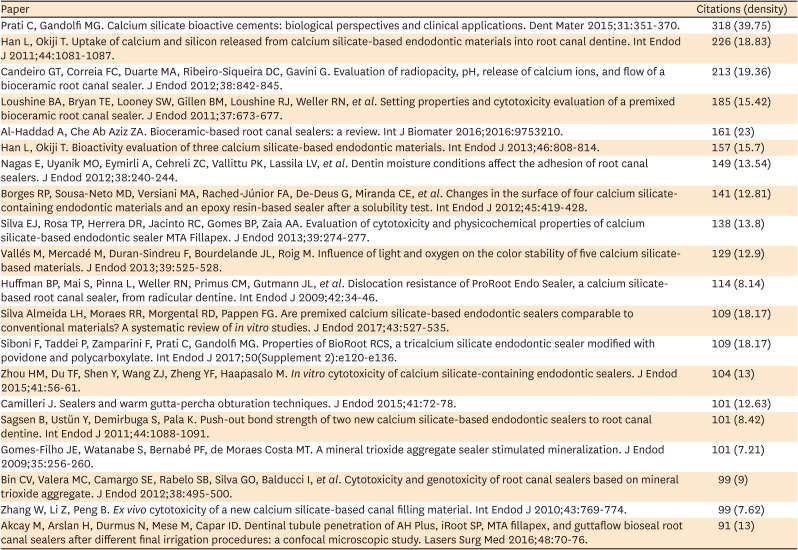
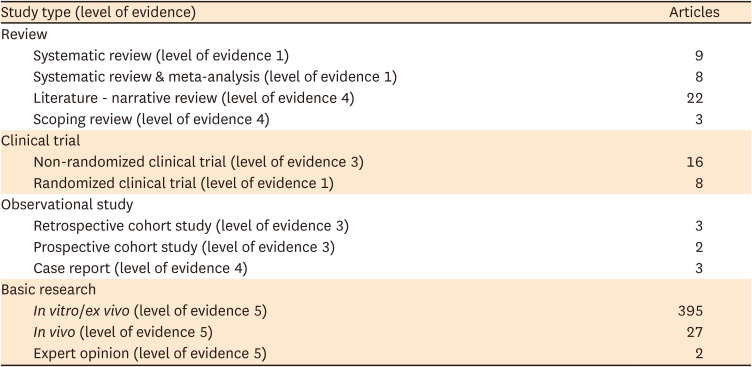
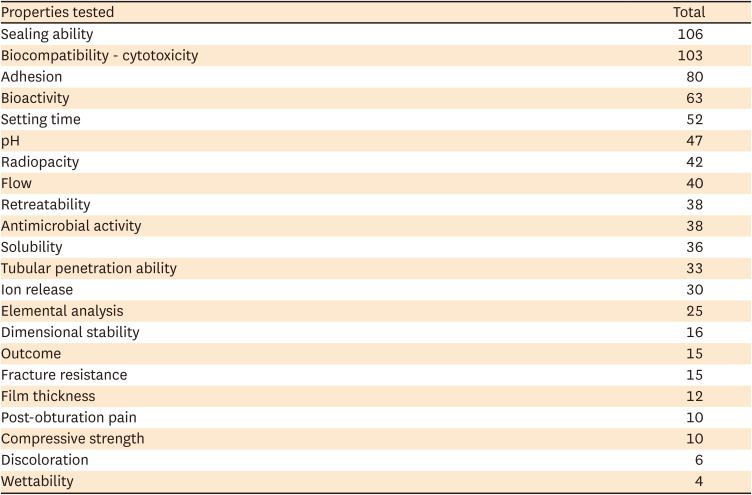




 PDF
PDF Citation
Citation Print
Print



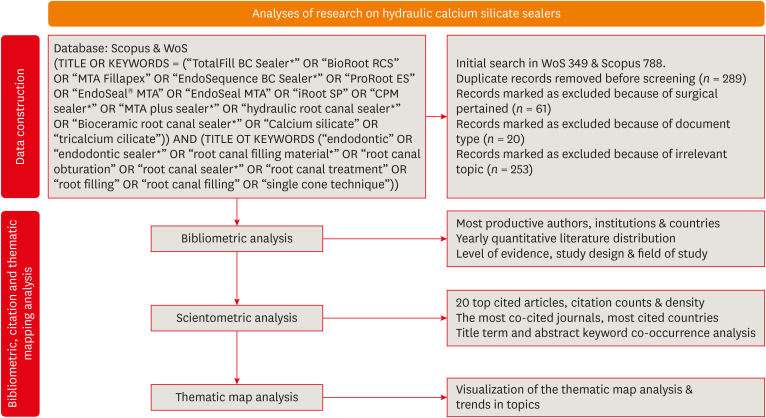
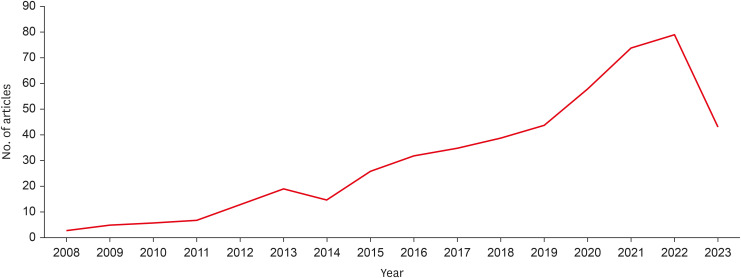

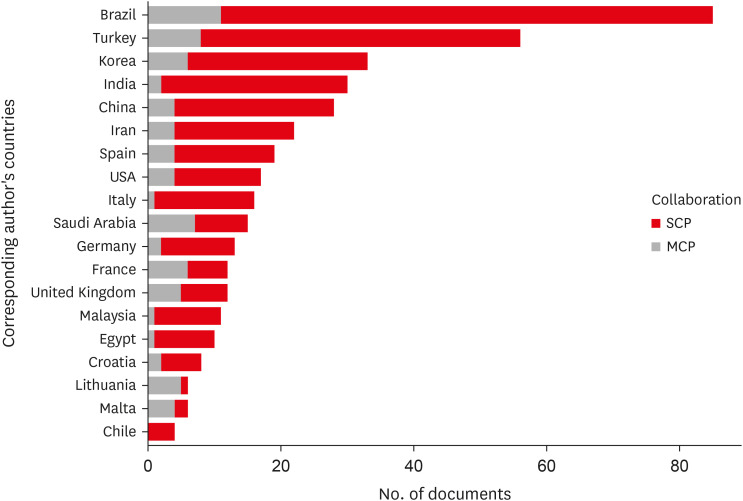
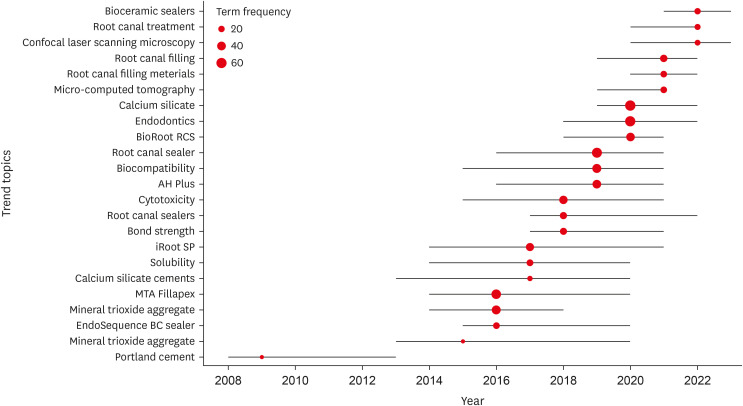
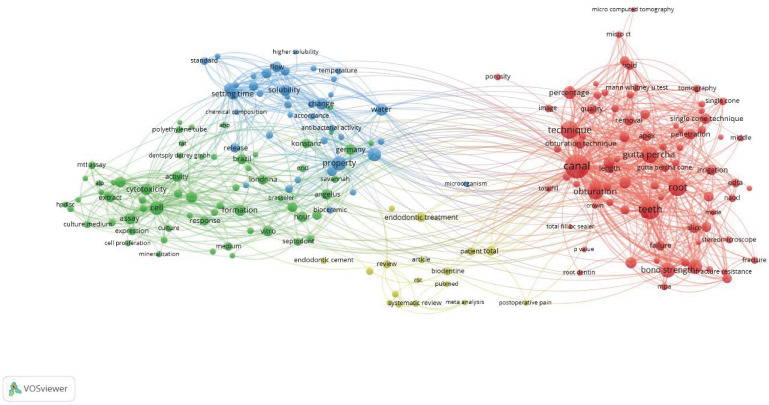
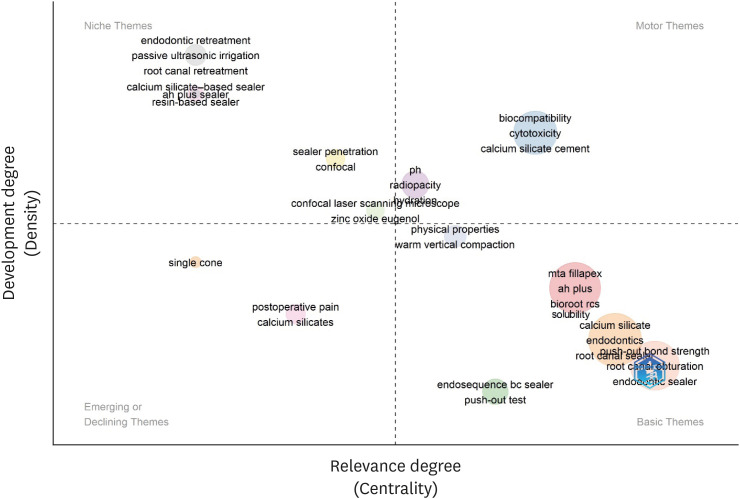
 XML Download
XML Download